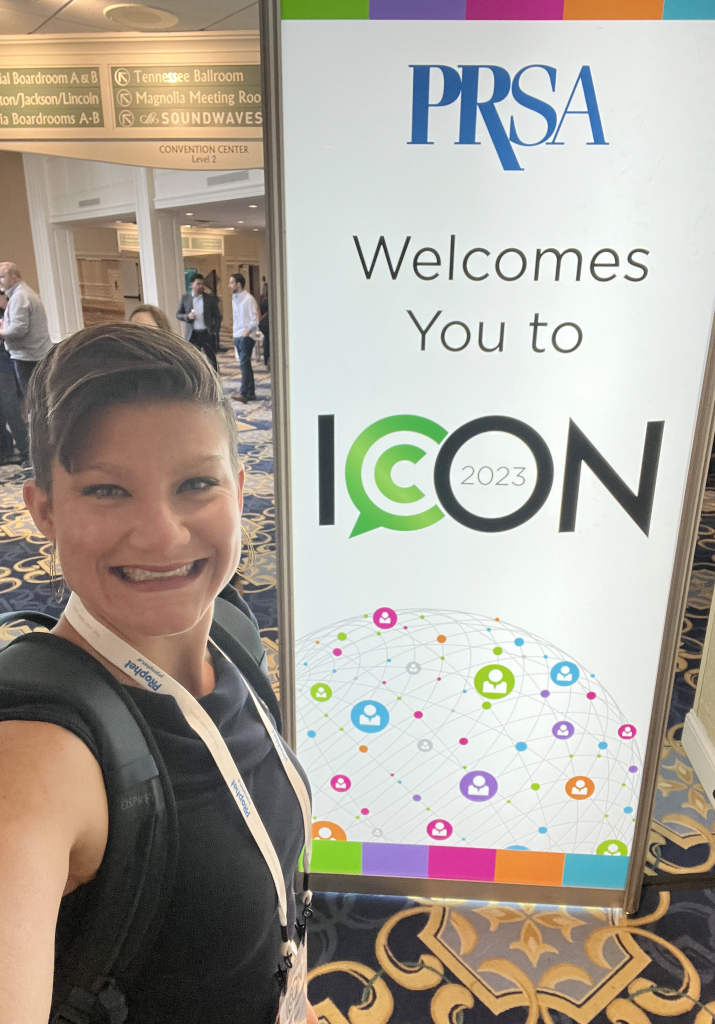
Jethro Jones is a former principal who earned the National Association of Secondary School Principals’ (NASSP) 2017 Digital Principal of the Year award, due to his innovative technology integration in school along with his work as host of the Transformative Principal Podcast, a show he developed to connect school leaders and aspiring leaders in conversation around the pressing topics that matter in the profession. To date, the podcast has earned more than 1,000,000 downloads, becoming one of the most prominent series for school leaders and uniquely positioning Jones to evaluate and understand the power of sharing one’s story.
In the interview, Jones — who also recently authored the book SchoolX: How principals can design a transformative school experience for students, teachers, parents – and themselves and is consulting schools and districts on redesign efforts — spoke with us about the benefits of telling your school’s story, including the impact it has on areas one might not expect. From teacher recruitment and retention to community relations and gaining support for your initiatives, proactive communication moves the needle.
The conversation has been edited for length and clarity.
Your work is all about helping school leaders to become “Transformative Principals,” and one of your belief statements explains that Transformative Principals have more fulfilling careers, because they shift from just putting out fires to actually leading. One of the persistent “fires” many leaders face is teacher turnover and the pressures it creates around retention and recruitment; and this can certainly make a principal feel as though they’re unable to move things forward. What are some of the ways you’ve seen transformative principals succeed with teacher retention and success?
Jethro Jones: Regarding teacher retention and success, it always goes back to relationships. If you don’t have a relationship with your teachers, they’re not going to have a reason to stick around in your school. So first and foremost, to be someone who’s not just a manager putting out fires and instead to be in a position to truly lead, principals have to start by building those relationships.
Fortunately, there are simple ways to do this. Number one is to care about people as human beings, period. Don’t care about them as just employees or teachers, or with respect to what they can do for you. Not a lot of leaders do this, but when you care about your faculty as humans first and foremost, they’ll want to be close to you.
The second thing is to give your teachers gratitude for what they do. Teachers go all out, and we don’t often have a way to reward them financially, but being grateful and expressing that sentiment as often as possible makes a difference.
Finally, the third thing is to brag about them. One of the powerful things I learned early on is that if you tell a mom and a dad about how great their kid is, they just love you. That extends all the way up through adulthood, and there have been many times I’ve had the opportunity to meet the parents of my teachers. Every chance I get, I gush about how wonderful their child – who’s now an adult – is at being a teacher in my school.
Those three things are not super challenging to do. They don’t take a lot of time, but they do require intention and paying attention to what’s going on.
Another of your statements is, Transformative Principals get more money for their schools because their vision is clear, and people want to join them. Creating and communicating a clear vision is essential in so many ways. How does it attract people – faculty, students, parents – to a particular school, and what are the other positive outcomes you recognize?
JJ: People want to be part of something that’s awesome.
When I was a principal, we had a clear goal, which was to have every student have a business they were working on; whether that was a nonprofit or a for-profit, that part didn’t matter, but the idea was that kids were working on their own individual businesses. When people heard what we were doing, they wanted to help out. They wanted to donate their time and money to support this program. They wanted to work with our kids.
This illustrates the power of having a clear vision that you can then communicate to your stakeholders and community. When people hear about your great work, they want to be a part of it – and what that means is they’re willing to take ownership of that vision and make meaningful contributions.
Even better, recruiting more supporters can help you solve challenges you’re not yet aware of. Your clear vision means you know the destination you want to reach, but you may not necessarily know how to get there. So when you bring together more people with diverse skills and talents, you can accomplish more than you imagined.
Setting your vision and understanding the power of communicating that vision can lead to powerful results.
In your years as a school leader, what did you learn about the impact your school’s communications had on your engagement with the community? For example, when you proactively shared your good work, did that make a difference in the school’s relationships with students’ families?
JJ: So, one year, I set a goal to be in the newspaper 12 times for positive stories about our school. I wasn’t sure who would write stories about us or what they would write, so it was an ambitious goal, but what I quickly learned is reporters are eager for stories that make people feel good. Yes, they will pick up the salacious stories when they are available, but we shouldn’t underestimate their eagerness to share the good things that are happening.
Once I set that goal, I found I could meet it by regularly sharing all the good things we were doing — sharing them intentionally.
More importantly, what happened is that as we shared the good things we were doing, people had different reactions to our school out in the community. I started hearing, “Oh yeah, good things are happening there,” when I would tell people where I worked. Perception is reality, so people hearing about good things and then thinking the good things were happening meant that they believed the school was doing good work. Even though we still had work to do, focusing on the positive and being proactive let us improve the perception and awareness of the work.
Your blend of experience as a school leader, consultant, and podcast host has given you many opportunities to collaborate with different companies and vendors. What lessons have you learned about finding the right collaborators to help you achieve your important goals?
JJ: There are two important things when it comes to collaborators:
The first is that you have a vision for what you’re trying to accomplish. Because of my experience in these different roles, I’ve seen projects come together in a variety of ways — often accomplishing things I hadn’t thought were possible. I think the reason for that is I try to look at the situations and see myself as an independent person trying to achieve something and then trying to find the people who can help me achieve it.
The point is not that it’s just me doing my thing, but rather that it’s about surrounding myself with the right people. And identifying the right people all begins with having that clear vision of the destination and understanding who can help us get there. Interestingly, I’m not always good at articulating my vision to others, but when I have the right collaborators – and when I also listen to their clear vision – we fit into place and achieve our goals.
The second thing is really about relationships: rather than seeing other people as competitors, we need to see them as collaborators. My first instinct with anyone I meet is to consider whether they’re a potential collaborator, what that might look like, and how it benefits us both. In schools, sometimes we have this fake competition that we make up in our minds, but realistically when we look for collaborators first and competitors last, we have more success.
What advice would you give education leaders about the importance of telling their stories and how to do so effectively?
JJ: I was recently talking with a principal who’s navigating this as he goes into a new school. He was trying to figure out how to build credibility by explaining where he’s been but also express vulnerability to open himself up to his new staff.
By sharing your story, the struggles you face, and the successes you’ve had, you get that opportunity. You can tell who you are, which builds trust and allows your team to see what you really believe in and what matters to you. That’s critical as a leader going into a school and also going into the community and talking about what your school or district has done. This is when you can tell the story of what you hope to accomplish and how the broader community can join you in achieving it.
I got a great piece of advice, which was, “Your chapter one is not their chapter one.” You’re entering their story when they’ve already had several chapters and vice versa. So rather than starting fresh and thinking, “this is the beginning,” you recognize that everybody comes with some history and something already formed. Find ways to identify their strengths and what they’re good at and focus on sharing the same about yourself, and in that way, you can blend your stories and become more successful.




